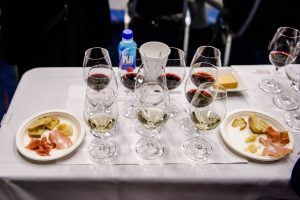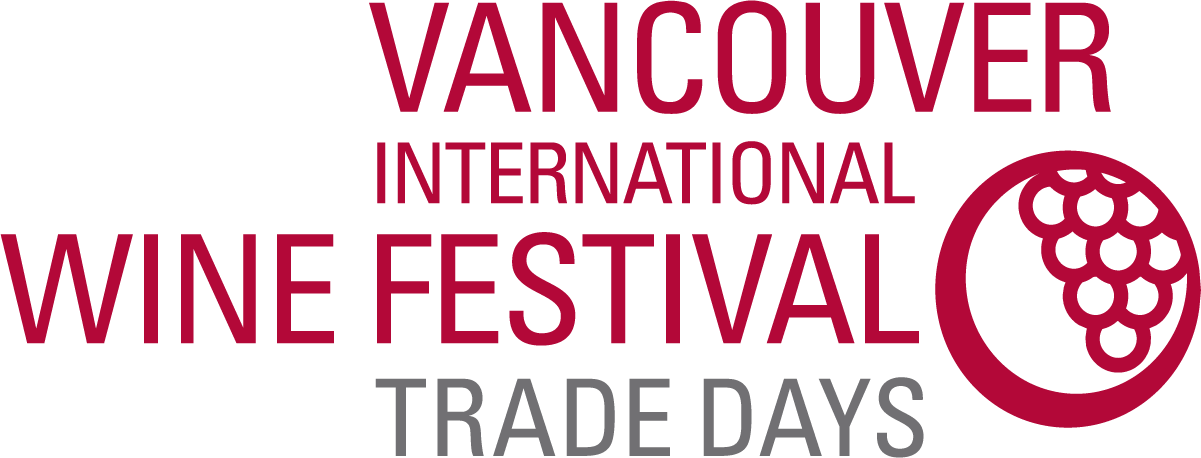Andrew Jefford: Keynote Speaker
Monday, February 24-Friday, February 28, 2020
Recap by Sid Cross
The one week 42nd annual Vancouver International Wine Festival (VIWF) spotlighting 162 participating wineries of which 42 represented theme country France concluded on March 1, 2020. Another amazing success story with 57 festival events highlighted this year by outstanding keynote speaker Andrew Jefford (AJ). AJ & family live in a small town in Southern France a part of the Montpellier district of the Languedoc-Roussillon wine region. He is a highly respected journalist with multiple awards for his many books (including The New France) and is contributing editor for The World of Fine Wine & Decanter plus Academic Advisor for Wine Scholar Guild. AJ joins a long list of top educators over many years at VIWF that started with Michael Mondavi in February 1979. So many have followed over the decades including early on Robert Balzer at the California Wine Festival, March 1981, Hugh Johnson for the sixth American Wine Festival, March 1984 and even this scribe who has been actively involved in some capacity for all 42 festivals. This tradition has carried on with AJ brilliant this year raising the level so high with his astute topical most intellectual comments delivered at these following seven events. You had to be there to savour the wonderful flavour of his delivery but here are a few concise educational notes:
Official #VIWF Opening reception
February 24 at Joey Bentall One
With the introduction of AJ and announcement that Bacchanalia Gala Auction at Fairmont Hotel Vancouver February 22 had raised $256,000 for charitable partner Bard on the Beach Shakespeare Festival.
Industry Networking Lunch
February 25 at Terminal City Club
AJ debated whether it was mainly “nature or nurture” that has resulted in France becoming such a diverse respected land mass for vines at varying latitudes, temperatures, north and south winds, alkaline & limestone soils that those vines really like. AJ also offered up that there are three things that the French people do better than anyone else –
(a) “Divine Dissatisfaction” of never being happy to sit on their laurels but always arriving on Monday morning with a frown trying to do even better!
(b) “Fundamentally Modest” so noble vine varieties are based on origin and not with an emphasis on marketability resulting in consumers being the beneficiaries of all this.
(c) “High Level of French Cuisine – Vive La France Gastronomique!”
Keynote Speaker Lunch
February 26 on French Lessons in a Warming World
AJ started by referring to recent wild weather with high temperatures in France that broke the 2003 record of 111F with 115F or 46C but no wine region is immune. It is affecting all vineyards with higher alcohol and the old balanced classicism of style is under duress. Not all losers though and some Northern vineyards are being helped and even Bordeaux is riper since 1982. It has not reached the critical point of change or life threatening yet but may arrive. Bordeaux suggesting new grape varieties be planted but lots of rules & regulations mean you can’t move the Chambertin vineyard boundary. AJ suggests four unwritten rules as most important:
(a) Know Your Vineyard with attention to detail – used the example that in 2050 it may be too hot for Romanee-Conti Pinot Noir but replanted with Grenache that may be very good but not the sublime R-C as we know it that can never be replaced.
(b) Respect The Natural (not natural wine) of the seasons and style of the vintage overlaying the terroir.
(c) Difference Is Everything – your response to climate change may be a step backwards.
(d) Embrace Climate Change in a Positive Way – like they did with phylloxers before the cactus takes over the grape vine. Embrace change in Canada and other New World wineries. Topical that the new Master of Wine from Canada Ross Wise MW Winemaker of Black Hills Estate Winery did his Research Paper on “How will climate change be influencing viticulture in British Columbia’s Okanagan Valley by the 2050s?
Read Andrew Jefford’s full keynote speech here.
The Plenary Session
February 27
Featured not only AJ but co-moderator Jon Bonne (delightful 2019 Keynote speaker) on a vinous journey around the special wine regions of France serving top “Cru” representative wines.
Celebrating Excellence at 17th Annual Awards Lunch
February 28
AJ knows there are “rock star” wine writers out there but the knowledgeable enthusiastic sommeliers are on the front line of service and so good at food/wine matchings. Sommeliers are teachers and ultimate custodians of both young & old wines that bring a lot of happiness for people going to restaurants. Toast to the Sommeliers of the World!
Many thanks Andrew Jefford for your most memorable learned contributions to the 42nd VIWF.
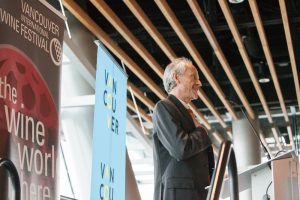
Climate Change Symposium
Wednesday, February 26, 9:30-11:45 a.m.
Claudia Laroye of Vacay.ca attended the Climate Change Symposium and shared her experience and learnings from the panelists:
In BC, wine industry talks climate change challenges and solutions
Moderator: Michelle Bouffard
Panelists: Richard Angove, Felicity Carter, Pierre Corvisier, Michael Fagin, Katie Jackson, Lenz Moser
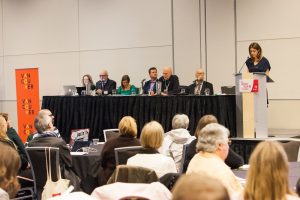
Languedoc with Gérard Bertrand
Thursday, February 28, 10-11:45 a.m.
Recap by Christine Campbell, girlsgogrape.com
Peace, Love and Harmony
Gérard Bertrand was the highly anticipated guest of the first Vancouver International Wine Festival masterclass held Wednesday morning. Bertrand brought 10 exquisite wines to taste, including “the most iconic rosé on earth” that retails for over $200 a bottle. The wines Bertrand shared were nothing shy of superb, “I want to deliver the ‘character’ of a place. I want my wines to ‘taste’ of somewhere.” He was quick to add that he never makes the same blend year after year, but instead uses intuition to reach the perfect balance for the wines he wants to make and enjoy.
At the age of 10, Bertrand was introduced to his fathers’ cellar after spending his childhood summer vacations helping out in the vineyards, “My father believed in the possibility of crafting great wines from the Languedoc at a time when the region was not known for its quality. For me, I am on a mission to promote the Languedoc region – I need to do this to pay tribute to my roots, where I have come from, to the people who worked this land before me.” His father imparted in him a lifelong passion for wine and a vision of excellence for the Languedoc region.
At the heart of Bertrand’s message was his absolute belief in and practice of biodynamic viticulture, “You cannot reveal a great wine if your soil is more or less dead. In biodynamic farming, everything is alive, including and most importantly, the soil and subsoil.” Bertrand is a fervent believer that we have to be excellent ambassadors of the earth, “The wine industry must be an example for agriculture. It is important to respect the planet and it is our journey is to take care of the soil, subsoil and our water sources.” All of Bertrand’s 2,500 acres of vineyards laid out over 16 different estate sites are all biodynamic.
Moderator: Anthony Gismonid
Panelists: Gérard Bertrand
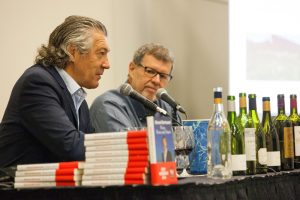
BC: No Place Like It
Wednesday, February 26, 3:45-5:30 p.m.
Recap by Jennifer Matli, wineacumen.com
This session was artfully facilitated by Barbara Phillip, who selected 10 lovely wines representing the diversity of styles, varietals, and terroir across British Columbia. The tasting began with bubbly (as most good things do!), worked its way through Riesling, Pinot Gris, and Chardonnay before making its way into Pinot Noir, Cabernet Franc, a classic blend, and finishing with a Syrah.
The Okanagan Valley Geographic Indication (GI) produces 85% of Okanagan wines, grows a large variety of varietals, and gets two hours more sunlight per day than Napa. The following wines were presented:
- Poplar Grove Winery Pinot Gris, 2018. This wine pulls 75% of the fruit from the Naramata Bench, a sub-GI of the Okanagan Valley.
- Quail’s Gate Winery Rosemary’s Block Chardonnay, 2017. It was fun to try a wine from one of the early BC winery pioneers.
- Meyer Family Vineyards Old Block Pinot Noir, 2017. They specialize in Chardonnay and Pinot Noir, and consistently win Wine Align National Wine Awards of Canada as a top small winery.
- Osoyoos Larose Grand Vin, 2016. This balanced red blend is produced by a team from Bordeaux within the Okanagan Valley. Their winemaker Caroline Schaller explained that it’s one of the few places in the world where wineries “start harvest in t-shirts and finish in snow.”
- Painted Rock Estate Winery Syrah, 2016. The elegant Syrah was produced by the winery named the Canadian Winery of the Year from the Intervin International Wine Awards in 2018.
The Similkameen Valley has the highest concentration of organic farms in all of Canada, 15 wineries, and is known for its young, mineral-laden soils.
- Michael Clark, winemaker from Clos du Soleil held up a fist-sized prop, explaining that he “always travels with his rock.” He shared the organic, biodynamic, delectable Clos du Soleil Winery Winemaker’s Estate Cabernet Franc, 2016.
Fraser Valley is making interesting sparkling wines that balance freshness with intense red fruits. It’s especially exciting for those of us living in Vancouver and dreaming of picking up a bottle of wine from the vineyard down the street, as this truly embodies buying local. The following wine was presented:
- Backyard Vineyards Blanc de Noir Brut, NV. This wine is 100% Pinot Noir, and crafted with care in the traditional method of sparkling wine production.
Vancouver Island has a bit of a rain shadow and some interesting bubbles and Pinot Noir, and shared an interesting sparkling rosé produced in the Charmat method:
- Unsworth Vineyards Carme de L’ille Rose’ Sparkling, NV. This is made from 100% Pinot Noir (they also produce a still Pinot Noir.)
Lillooet has only two wineries and tons of potential.
- Heleen Pannekoek from Fort Berens (first winery in the GI) explained her love of the place by stating that the “prettiest flowers often grown on the edge of the highest cliff.” She presented the Fort Berens Estate Winery Reserve Riesling, 2018.
Moderator: Barbara Philip MW
Panelists: Stefan Arnason, Ross Baker, Michael Clark, JAK Meyer, Heleen Pannekoek, Caroline Shaller, John Skinner, Chris Turyk
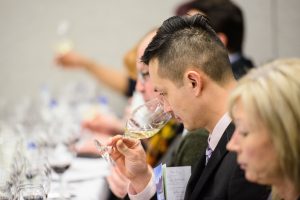
Vin Tour de France
Thursday, February 27 1, 9:30-11:30 a.m.
Recap by John Schreiner
It is complicated
“C’est compliqué!”
With that phrase, wine writer and co-moderator Jon Bonné set the theme for the plenary session on French wine at the 2020 Vancouver International Wine Festival.
“It is complicated,” he repeated for his unilingual listeners. That is not to reflect negatively on French wines, which Bonné believes are still the greatest in the world. It is just that winegrowing in what is now France began about 600 BC. Complication is inevitable with that much history.
For example, when Laurent Drouhin from Maison Joseph Drouhin in Burgundy speaks of climat, he does not mean climate. A climat in Burgundy is a vineyard. There are thousands, each very likely with an individual terroir.
Terroir is another complicated concept originating with the French. It is a definition of all the elements, ranging from soil to climate, that govern the character of individual wines. Note how the term was used by Châteauneuf producer Bernard Duseigneur. “My approach is mainly a terroir approach,” he said. “The identity I am looking for in a wine comes first from the soil, first, because we have different terroirs. We have all the soil types and they give different wines using the same grapes.”
Viticulture, in pursuit of sustainability as well as better terroir expression in the wines, has become more complicated. Typical is the decision taken by Caroline Frey after buying the historic Domaine Paul Jaboulet in the Rhône in 2006: the vineyards were transitioned to organic production and now are adopting biodynamic practises. The same is happening at Drouhin in Burgundy. “We are not doing it for marketing reasons,” Laurent Drouhin said. [We want to] “transmit those vineyards to the next generation in good shape.”
The complication confronting all French vignerons is climate change. While it means better Champagnes, it is a challenge elsewhere. Producers are coping by adapting viticultural practises. After a serious drought in 2017, Bernard Duseigneur believes Châteauneuf-du-Pape producers soon will need to install irrigation.
One conclusion seems certain: “The wines produced 100 years from now are probably different,” Laurent Drouhin says.
Moderatora: Andrew Jefford, Jon Bonné
Panelists: Marcel Combes, Laurent Drouhin, Bernard Duseigneur, Michel Gassier, Jean Frédéric Hugel, Adrien Laurent, Clovis Taittinger
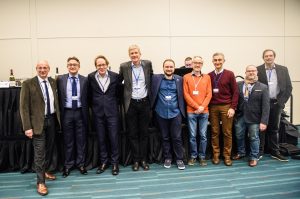
Emilia-Romagna’s Native Grapes
Friday, March 1, 9:30-11:15 a.m.
Recap by John Schreiner
Bordered by better-known wine regions like Tuscany, Emilia-Romagna’s wines have a low profile in spite of the large volume of wines produced there.
The reasons:
- Emilia-Romagna is much better known for its foods (Parma hams, Parmesan and other artisanal cheeses and balsamic vinegar).
- Some of the native grapes are not well known.
- The Lambrusco family of grapes is still recovering from a former reputation for mediocre wines.
“Fifteen years ago, no high quality restaurant in our area had a Lambrusco on its wine list,” said Ermes Scardova, a wine producer from Medici Ermete & Figli and a member of the masterclass panel on Emilia-Romagna at the Vancouver International Wine Festival.
That is no longer so because the quality of Lambrusco wines has dramatically improved, shown by two examples tasted at the masterclass. From Medici Ermete, participants were shown a fine dry sparkling wine with a delicate pink hue: Querciolli Lambrusco Sorbara NV. From Monte delle Vigne, there was a dark-hued Lambrusco Selezione sparkling wine, also dry, made with Lambrusco Maestri grapes.
These two wines illustrated the significant differences within the Lambrusco family. The production of wines like these are drawing consumers back to these formerly derided varieties. Once considered the equivalent of Italian cola, Lambrusca wine is a rising category in restaurants around the world.
There is more to explore among the wines of Emilia-Romagna, including Albana and Pagadebit, native whites capable of producing fresh and lively whites.
It is both a blessing and a curse that many of these varieties are unfamiliar. Hundreds of grape varieties are still grown in Italy that are not found in vineyards elsewhere. This makes Italian wines interesting to open-minded consumers but frustrating to impatient consumers.
“In trying to decipher what to drink, and what style, it becomes very difficult,” said Vancouver restaurateur Jenna Briscoe, the moderator of the masterclass. “Beyond the fact that each region in Italy has its own specialty, the varieties are not grown anywhere else in the world. Sangiovese might be the one exception.”
Sangiovese, the ubiquitous Italian red, is found in many Emilia-Romagna vineyards. The wines are more generous and softer than those of Tuscany. Producers may blend a modest percentage of Merlot or Cabernet Sauvignon with Sangiovese, with excellent results.
The lesson: it is time to play closer attention to the emerging fine wines from Emilia-Romagna.
Moderator: Jenna Briscoe
Panelists: Daniela Facciani, Ermes Scardova
